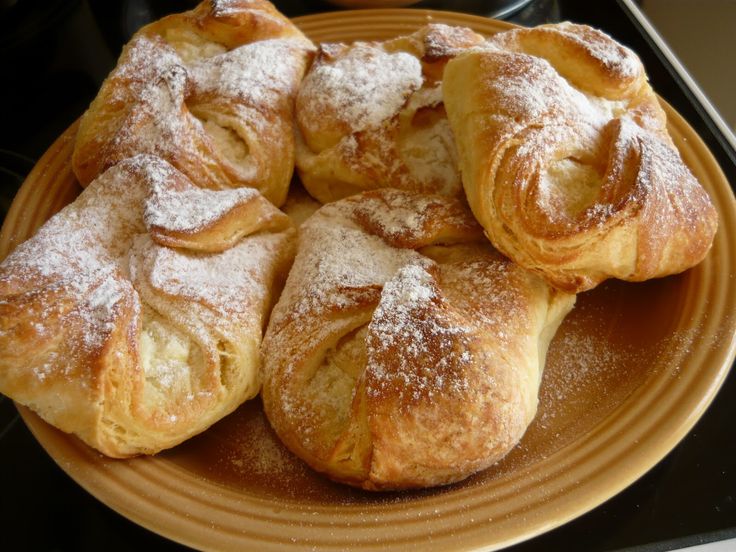
Krémes: The Timeless Hungarian Dessert
When it comes to Hungarian desserts, few are as celebrated and iconic as Krémes, a name that translates to “creamy” in Hungarian. This dessert, with its delicate layers of crispy puff pastry and light, airy custard filling, has been a staple in Hungarian cuisine for generations. Its simplicity, elegance, and irresistible texture have made it a beloved treat not only in Hungary but also in other parts of Central Europe.
Krémes is much more than just a dessert—it’s a cultural tradition, a nostalgic memory for many Hungarians, and a testament to the artistry of Hungarian pastry-making. In this article, we’ll explore the history, preparation, variations, and cultural significance of Krémes, delving into why it has remained a timeless classic.
The History of Krémes
The history of Krémes is deeply tied to the culinary traditions of Central Europe, particularly during the era of the Austro-Hungarian Empire in the 19th century. This was a time when Hungary’s cuisine flourished, influenced by a mix of local flavors and European trends. Desserts that combined flaky pastry and creamy fillings were particularly popular, and Krémes emerged as a quintessential example of this style.
While Krémes shares similarities with other European desserts, such as the French mille-feuille (Napoleon) and the Croatian kremšnita, it has its own unique identity. Hungarian Krémes is known for its emphasis on simplicity and balance, focusing on the richness of the custard and the lightness of the pastry. Over time, it became a centerpiece of Hungarian pastry culture, served in traditional coffeehouses and enjoyed during family gatherings.
Today, Krémes continues to be a beloved symbol of Hungarian culinary heritage, cherished by locals and visitors alike.
What Makes Krémes Special?
The magic of Krémes lies in its ability to combine contrasting textures and flavors into a harmonious whole. The crispy, buttery puff pastry provides the perfect base and top, while the creamy custard filling creates a soft, luscious center. The result is a dessert that feels both indulgent and light, making it a perfect treat for any occasion.
Key Elements of Krémes
- Puff Pastry:
- The top and bottom layers of Krémes are made from puff pastry, which is baked until golden and flaky. The pastry adds a satisfying crunch that complements the smooth filling. Some recipes use homemade puff pastry, while others rely on high-quality store-bought versions.
- Custard Filling:
- The heart of Krémes is its custard filling, which is made with milk, sugar, egg yolks, and cornstarch. The custard is cooked until thickened and then often lightened with whipped egg whites or whipped cream, giving it a characteristic airy texture.
- Topping:
- The top layer of puff pastry is typically dusted with powdered sugar, giving the dessert a clean, elegant finish. In some variations, the top is covered with a thin layer of caramel glaze or icing for added sweetness and visual appeal.
- Balance of Flavors:
- Krémes is not overly sweet, allowing the natural richness of the cream and the buttery flavor of the pastry to shine. This balance makes it appealing to a wide range of palates.
The Process of Making Krémes
Krémes may seem like a simple dessert, but its preparation requires skill and attention to detail. Here’s a step-by-step outline of the process:
Ingredients:
- 2 sheets of puff pastry (store-bought or homemade)
- 1 liter of milk
- 6 egg yolks
- 200g (1 cup) sugar
- 100g (1/2 cup) cornstarch
- 1 vanilla pod (or 1 tsp vanilla extract)
- 4 egg whites (optional, for a lighter texture)
- Powdered sugar for dusting
Steps:
- Prepare the Puff Pastry:
- Roll out the puff pastry and bake it at 200°C (400°F) until golden brown and crispy. Let it cool completely. Cut the pastry into two equal-sized sheets—one for the base and one for the top.
- Make the Custard:
- Heat the milk with the vanilla pod (or extract) in a saucepan until it’s warm but not boiling. In a separate bowl, whisk together the egg yolks, sugar, and cornstarch until smooth. Slowly add the warm milk to the egg mixture, whisking constantly to prevent curdling.
- Return the mixture to the saucepan and cook over medium heat, stirring continuously, until the custard thickens. Remove from heat and let it cool slightly.
- Lighten the Custard (Optional):
- For a lighter Krémes, whip the egg whites until stiff peaks form. Gently fold the whipped egg whites into the cooled custard to create an airy texture.
- Assemble the Krémes:
- Place one sheet of puff pastry on a serving tray. Spread the custard evenly over the pastry. Carefully place the second sheet of puff pastry on top.
- Chill and Serve:
- Refrigerate the Krémes for at least 2-3 hours to allow the custard to set. Before serving, dust the top with powdered sugar. Cut into squares or rectangles using a sharp knife.